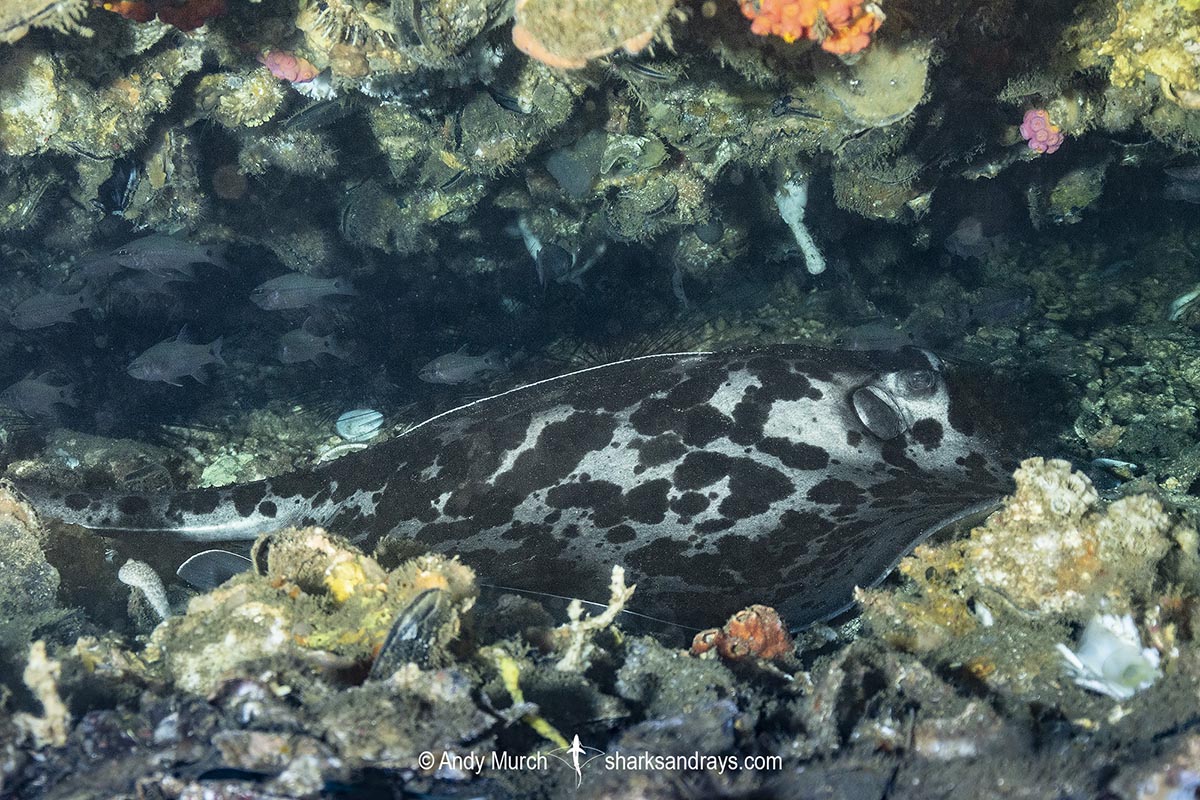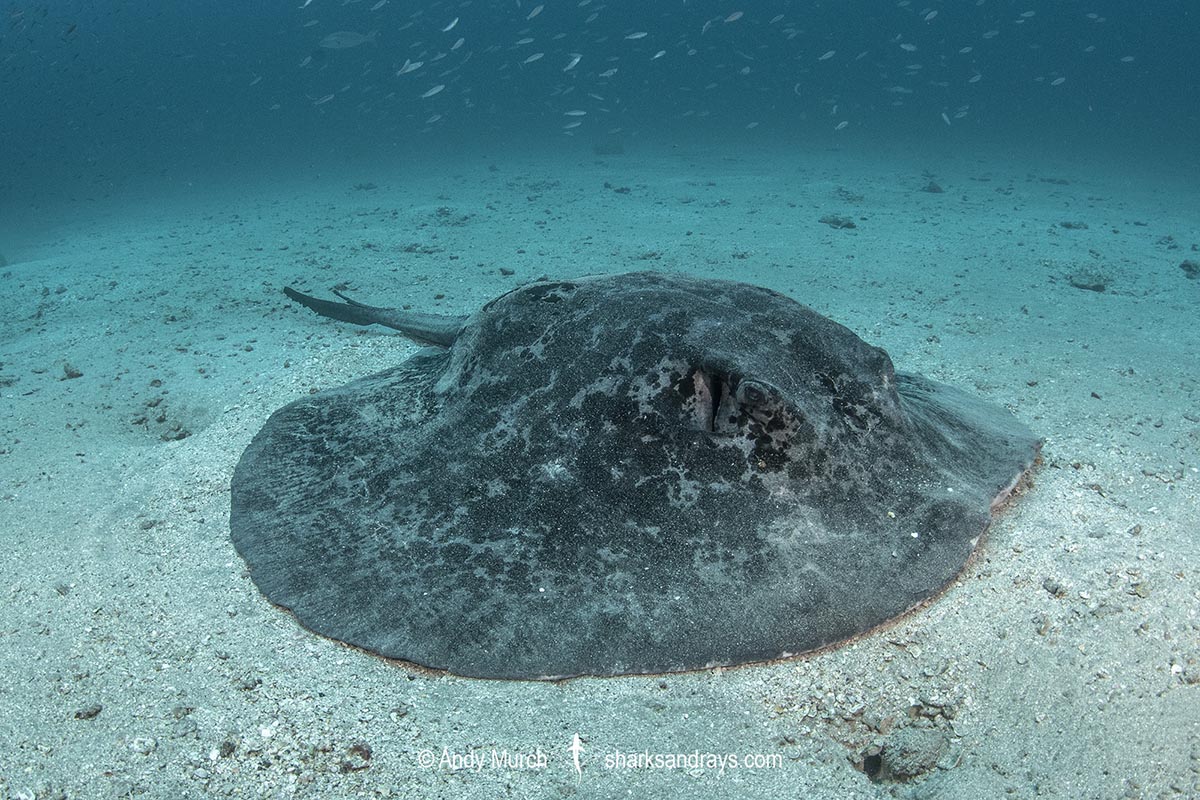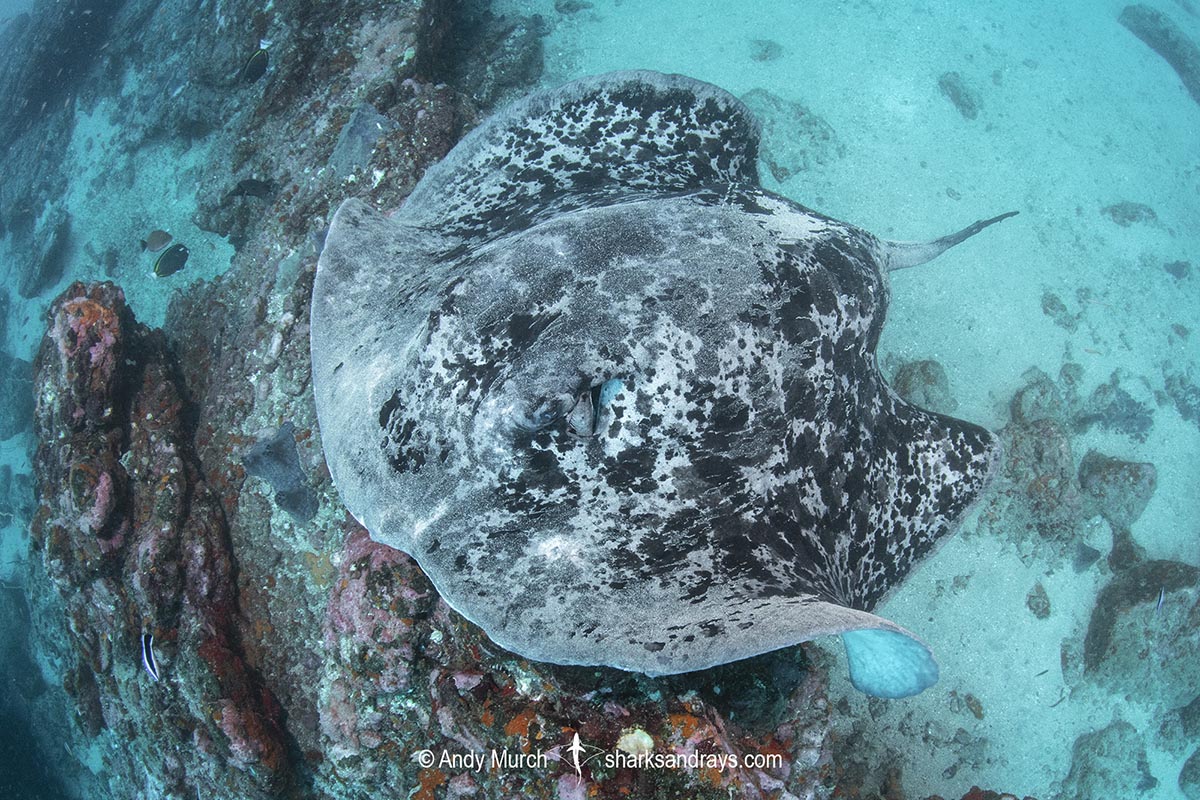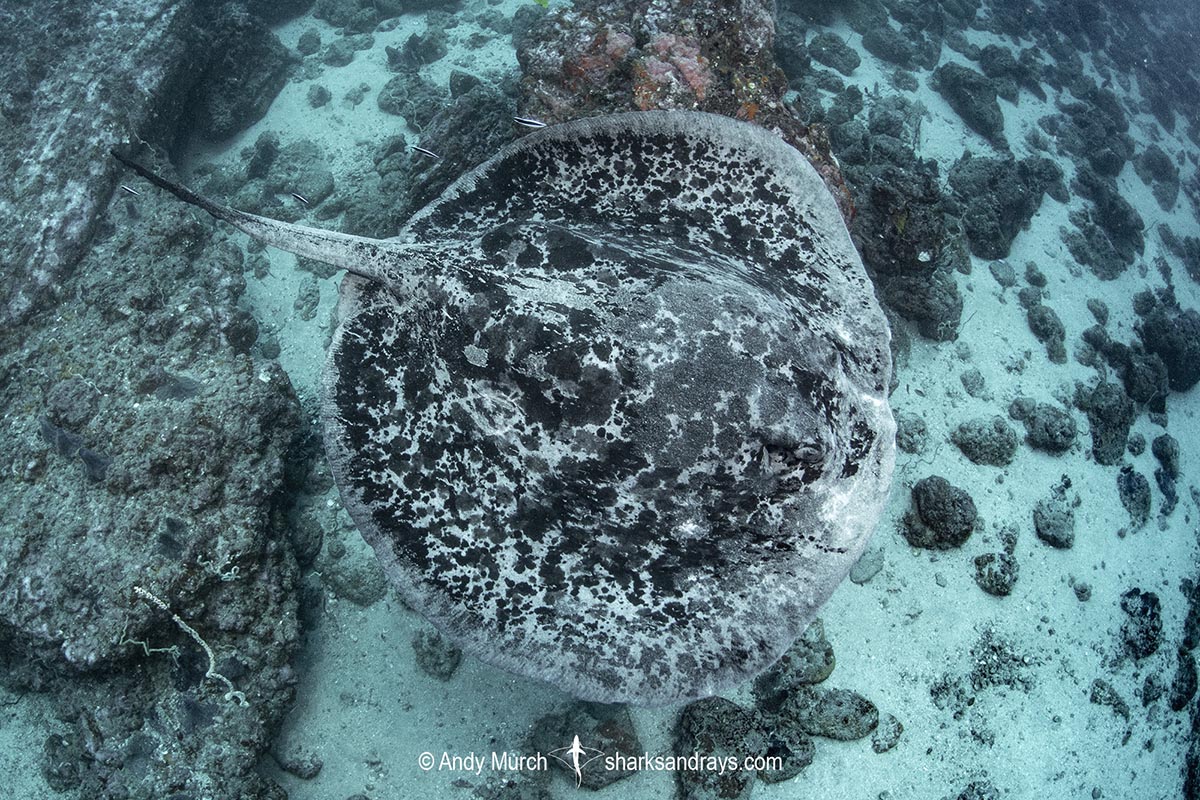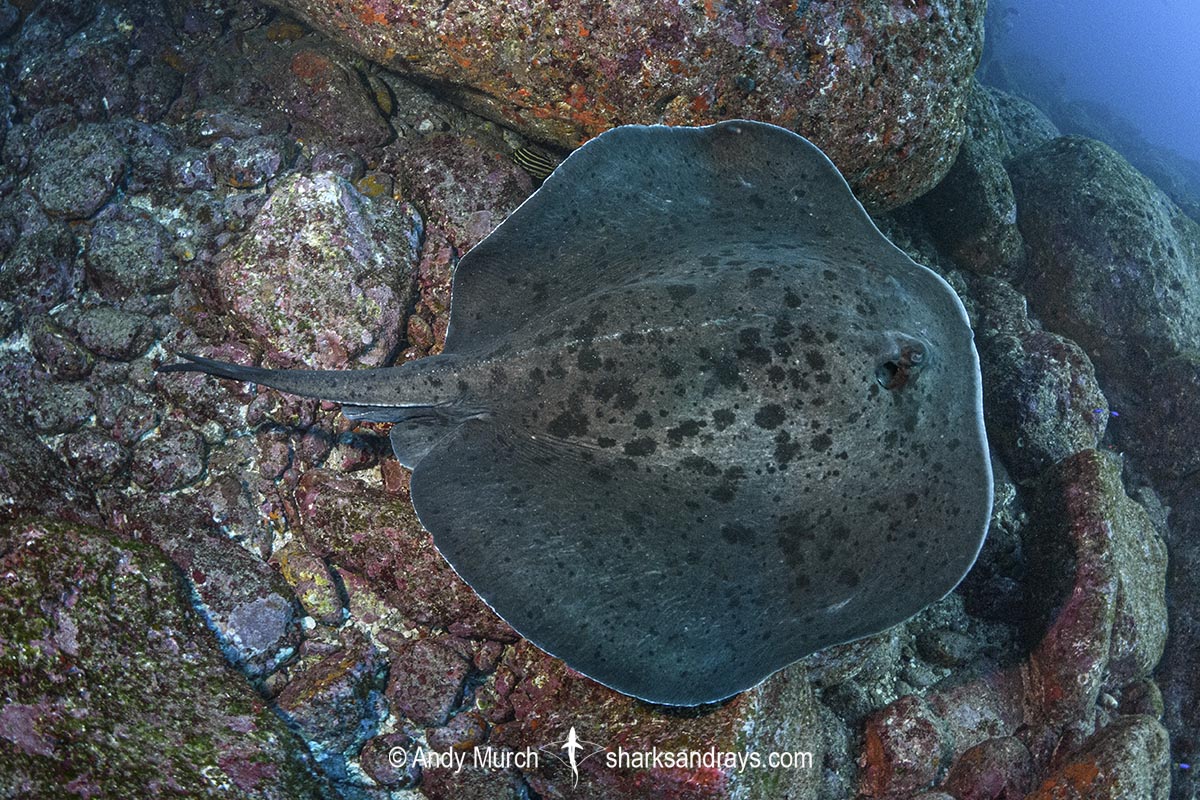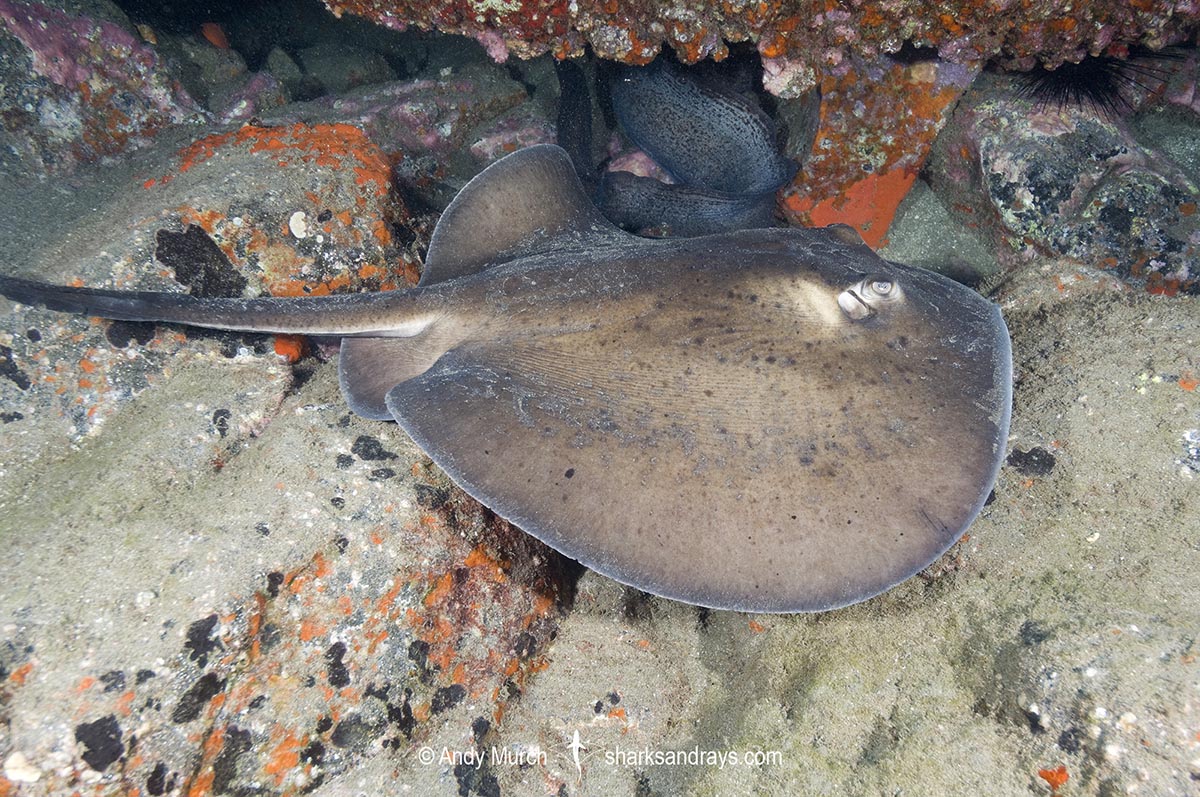Common names
Blotched Fantail Ray, Blotched Stingray, Blotched/Marbled Ribbontail Ray.
Binomial
Taeniurops meyeni.
Synonyms
Dasyatis melanospilos, Taeniura melanospila, Taeniura melanospilos, Taeniura meyemi, Taeniura meyeni, Taeniura mortoni.
Identification
A very large stingray with a sub-circular disc that is very slightly wider than long. Snout short, and obtusely angular/broadly rounded, with a small, protruding apical lobe at tip. Anterior margins of disc convex. Pectoral fin apices broadly rounded. Pelvic fins very short.
Eyes small. Snout length approximately 2x combined eye and spiracle length. Mouth wide with 7 short oral papillae. Lower jaw convex. Labial furrows weak. Skirt-shaped nasal curtain short, wide, short fringe on posterior margin. Nostrils large and oval.
Disc covered in small granular denticles. Thornlets present in small patches on each shoulder and in a thin band along midline. Tail wide-based and short; slightly longer than disc width. Tail tapers to caudal sting then thin to tip. Ventral finfold extends to tip of tail; finfold height 2-3 x tail height posterior to caudal sting. Dorsal finfold absent. One caudal sting usually present.
Colour
Dorsum grey with varying amounts of dark grey and black blotches and mottling. Ventrum pale with a wide, dusky or mottled margin. Tail beyond caudal sting black. Ventral finfold dark.
Size
Maximum disc width 180cm. Disc width at birth 30-35cm.
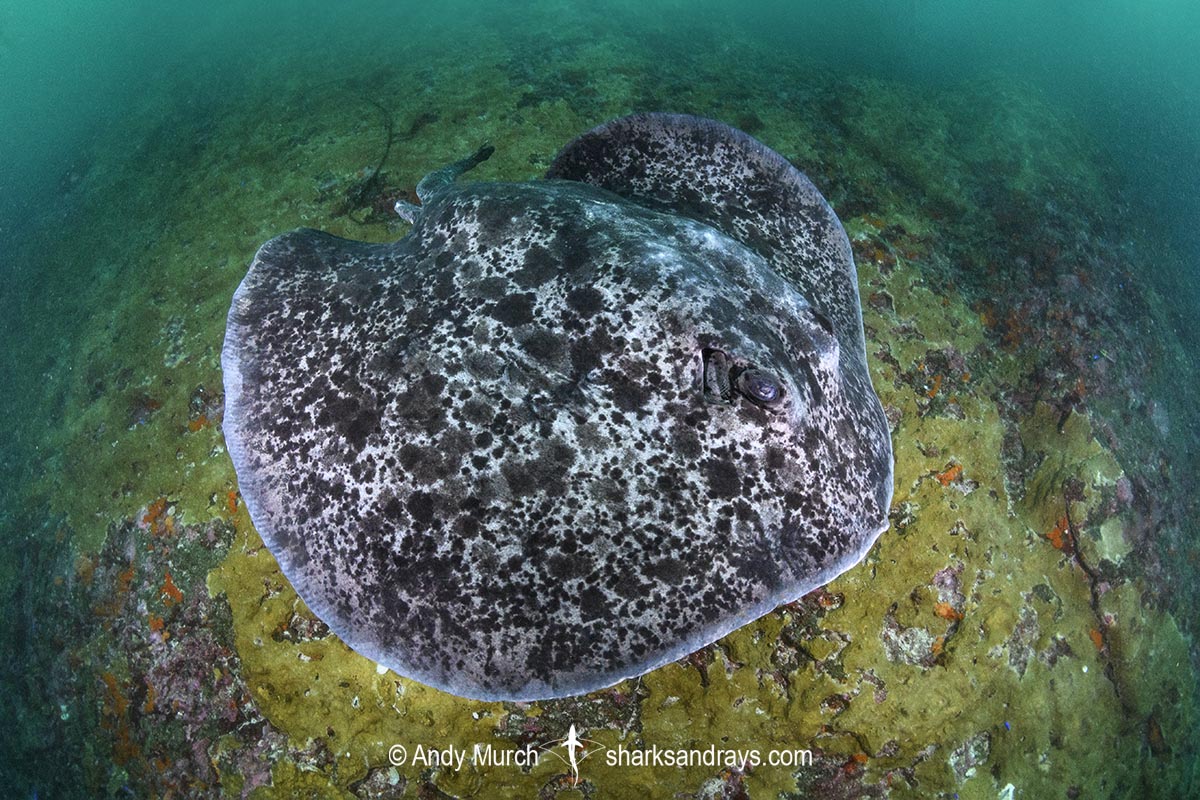
Conservation Status
VULNERABLE
Other than in Australia and a few Pacific Island nations, the blotched stingray is targeted and taken as bycatch throughout its range. No species specific catch data exists, but combined data for large rays caught in Southeast Asia indicates a decline of at least 50% in the last 75 years. Heavy fishing pressure from demersal trawling, gill nets, hook and line, and longline fisheries suggest that further declines can be expected.
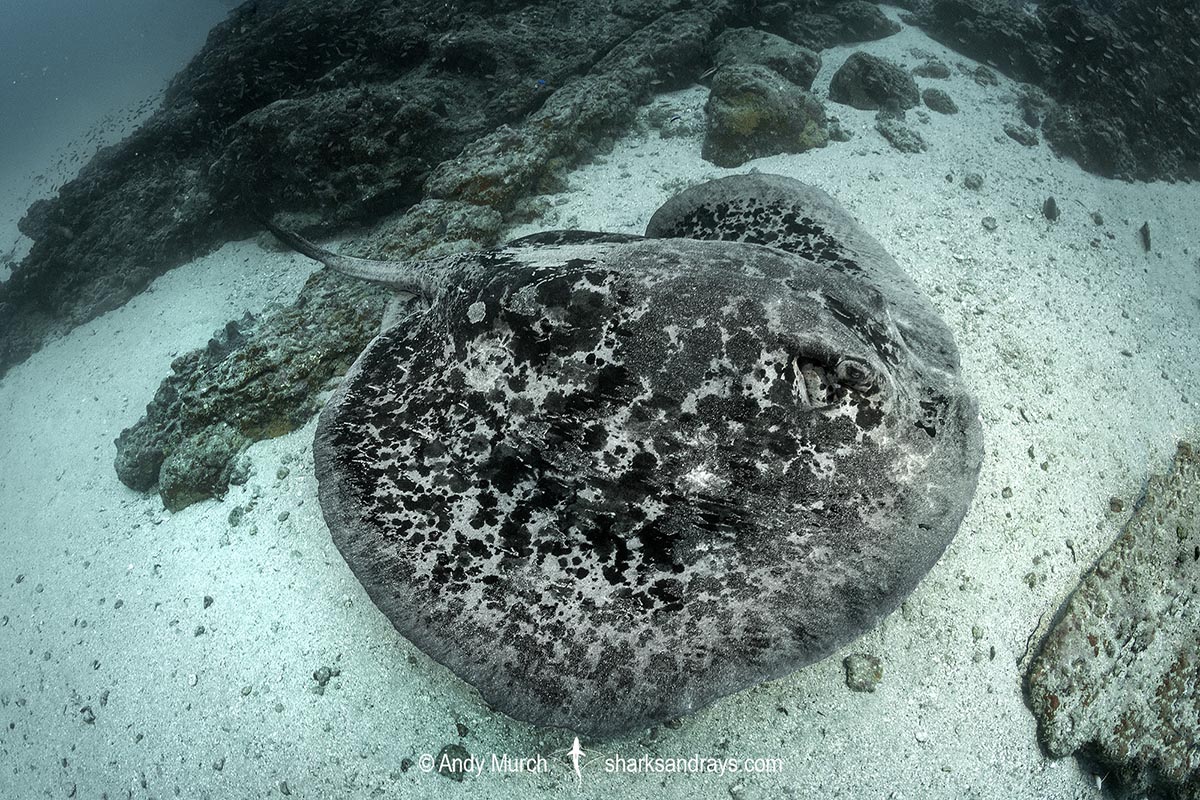
Habitat
Tropical seas and warm-temperate seas. On sandy substrates, reef rubble, rocky reefs, and in caves. Usually found inshore but maximum recorded depth 400m.
Distribution
Widespread in the Indo-Pacific. South Africa and Madagascar northward along east Africa, Red Sea, Arabian Gulf, India, and throughout southeast Asia from southern Japan to northern Australia.
There are also many observations at offshore islands and seamounts in the eastern Pacific but the EP population is now thought to be an as yet undescribed species (Peter Last personal correspondence).
Reproduction
Matrotrophic viviparity. Litter size up to 7 pups.
Diet
The blotched stingray feeds on small benthic fishes and invertebrates.
Behavior
Sedentary. Often rests under ledges and in caves during the day.
Reaction to divers
Quite easy to approach but will retreat if harassed.
Diving logistics
The Blotched Stingray is a common ray throughout its range. I have encountered this species in Africa, Australia, Indonesia, Japan, The Philippines, and (possibly a different closely related species) in French Polynesia, Cocos, Malpelo, and the Galapagos Islands. Assuming it is the species, blotched fantail rays are extremely abundant at Cocos Island off the coast of Costa Rica, where many can be seen on a single dive.
What’s new
View our full list of updates
Similar species
Round Stingray Distinguishable by generally smaller size and browner, less mottled dorsum.

